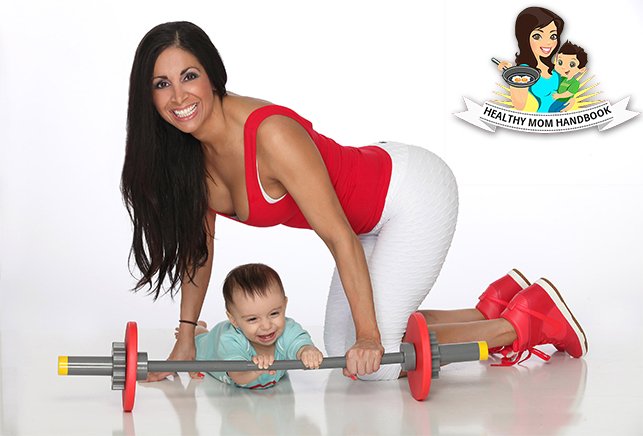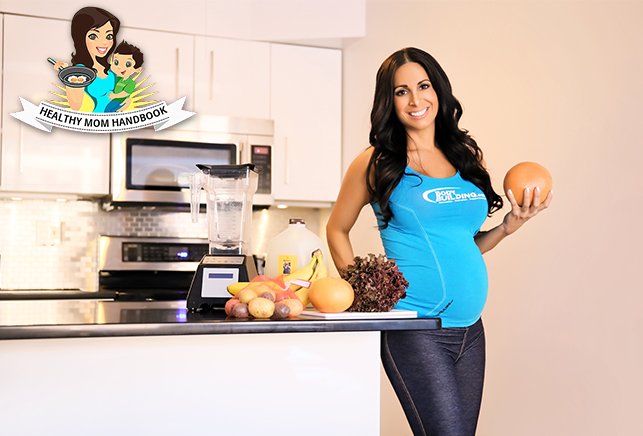
I was glad when Sia Cooper, founder and owner of Diary of a Fit Mommy connected with me and showed interest in my blog.
I knew immediately that I wanted to talk to her more, because Sia is an expert in a topic which I will address more in the future: how to best prepare your body for pregnancy and giving birth.

Sia Cooper is a personal trainer, a proud mama of two young children, and a true star on Instagram.
Sia’s tips will for sure help you and inspire you to define a better prenatal workout plan. I wish I knew her Diary of a Fit Mommy before I got pregnant!
Here is what Sia says:
Is there a particular workout that you would recommend to women who want to prepare their bodies for pregnancy? What are in your opinion optimal exercises for women who are trying to conceive?
Most women ideally would like to get in the best shape prior to having a baby, which I always recommend. For those who wish to conceive, there are a few things you can do prior to pregnancy.
I would recommend doing pelvic floor exercises and abdominal exercises before pregnancy to get a head start to strengthen your core. Having a baby can damage your pelvic floor and core due to so much pressure being placed upon them during your entire pregnancy, labor, and delivery.
If you go into labor with a strong pelvic floor and core muscles, it will protect your body and help make delivery easier for you.
You may also try yoga stretches to ease your mind and body to prepare for pregnancy. Tension can make it harder for women to conceive due to extra stress hormones being released within the body.
What kind of exercises can best support natural birth?
This is a hard one to answer because you never know how your delivery is going to go.
However, I would say one of the best exercises that you can do are SQUATS!
I did more squats during my second pregnancy and the labor was only 9 hours long compared to 22 hours the first time around. Squatting helps to prepare those muscles needed in order to push baby out.
I performed squats up until my last workout on the day that I delivered and I truly believe they helped me to gain the strength to make it through. Simply grab a 5-10 pound dumbbell and hold it at your chest with both hands. Slowly squat down as low as you can go-pause-and slowly come back upward. Aim for 10 repetitions, repeating 3 times total.
 How much sport would you recommend for women who are pregnant?
How much sport would you recommend for women who are pregnant?
This question all depends on how active you were prior to pregnancy.
Fitness is not a one size fits all and this is especially true for someone who is expecting. Many pregnant women develop medical conditions that may prevent them from working out during pregnancy and, in this case, your doctor will certainly let you know what to refrain from.
As long as they are active before pregnancy, it should not be an issue during. You can do just as much as you were doing before, but with modification. For example, you wouldn’t do anything that could cause you to fall or get hit in the belly. But you can keep up a regular gym routine with moderate amounts of weights and cardio if your doctor approves.
Which exercises are generally good for pelvic floor and getting back in shape after birth?
There are a few key moves that are quite helpful to do immediately upon giving birth.
Kegels, pelvic tilts, glute bridges, marching, heel taps, squats are amazing how healing and building strength to the pelvic floor. Out of all moves, kegels are most important in my opinion because they can help with not only restoring pelvic strength, but to also help prevent urinary incontinence. (Ladies, Sia is soooo right on this!)
It involves repeatedly contracting and relaxing the same muscles that help you hold your urine in. Next time you go to urinate, try stopping the flow of your urine by contracting your pelvic muscles for a few seconds. Then let go. This is how you perform a kegel, but you can do it at anytime-while watching tv, laying in the bed, etc.
These moves are also helpful for the mom with Diastasis Recti. For example, heel taps help to strengthen the transverse abdominis which is a super deep muscle responsible for stabilizing the spine to reduce the “pooch” of your lower belly. As many of you may know, one of the biggest signs of diastasis recti is a pooch.
How to do a heel tap:
- Lie on your back, bringing your legs up to a 90-degree angle with knees bent.
- Place your hands on your knees to support them.
- Exhale as you draw belly button to spine, draw in your pelvic floor and slowly drop 1 heel to touch the floor.
- Inhale, resting the heel on the floor.
- Then drop the other heel as you breathe out and engage your core. Breathe into the back of your rib cage.
- Don’t hold your breath, move slowly with your breath. Focus on your lower abdomen drawing in not bulging out as you drop your heel.
How many weeks or months after birth can women start to exercise again?
As long as they have their doctor’s approval-usually around 6 weeks after delivery if there were no complications. I was working out slightly and very subtly one week after my second delivery by doing pelvic floor work and light walking at my local track. However, this may be too much for another woman straight after giving birth.
A woman who has had a C-section might require additional weeks of rest to allow their incision to heal properly. Same goes with women who have large tears or other complications from birth. It is always best to wait for your doctor to approve you before attempting any strenuous activity.
During this time, focus on clean eating and light walking to help keep your momentum up while you wait! You know your body best so listen to it and trust it!
Why do some women get in shape several weeks after birth, while others take months and years (or never manage to bring their bellies back to the original shape)?
It depends on many factors. Mainly being genetics and how one took care of their health during pregnancy. I was blessed to bounce back after two pregnancies, but the next woman could be completely different and that is FINE. Nothing is wrong with that! We all vary in our recoveries.
Another reason why some women may bounce back faster than others is how active or fit they were before and during their pregnancies.
If you keep up with a steady routine, you are more likely to get your body back and recover from childbirth faster than someone who hadn’t worked out.
For my clients who are considering pregnancy, I always suggest that they get fit prior to conceiving and to stick with their workout plan and clean eating-with a few modifications-to keep on track while expecting.
Thank you Sia a lot for this wealth of information!
Here is again where you can find Sia: Diary of a Fit Mommy . There, you’ll find excellent ideas for simple prenatal workout plans, but also useful eating tips for women who are trying to conceive as well as those who are already pregnant. I personally most liked the exercises with step-by-step photos and the weekly grocery shopping lists.
See you soon, Darja






